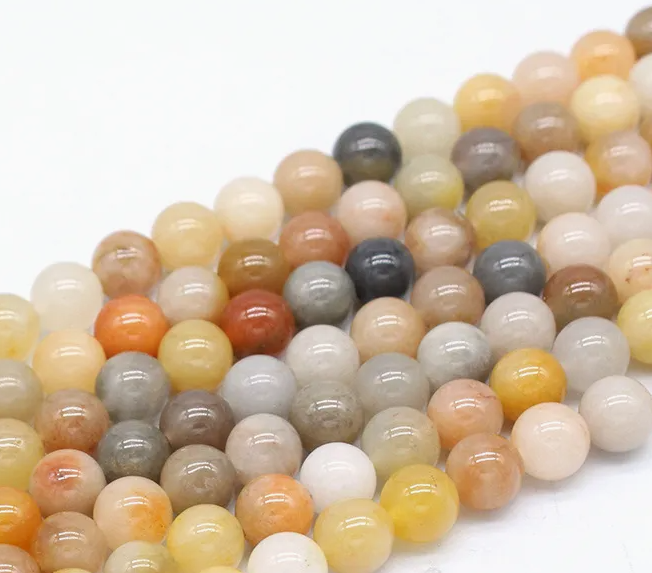
Jinsi Jade derives its name from the Chinese term “Jīn Sī” (金丝), which translates to “golden thread” due to its striking golden, thread-like inclusions. This beautiful gemstone is often associated with wealth, prosperity, and spiritual enlightenment, making it a treasured mineral in both ancient and modern times.
Composition and Locations
Jinsi Jade is a variety of tremolite jade, primarily composed of calcium, magnesium, and iron silicate minerals. The golden streaks running through the stone are usually due to the presence of iron or other mineral impurities.
This unique jade is predominantly found in China, particularly in regions known for high-quality nephrite deposits, such as Xinjiang and Henan provinces. Other occurrences have been reported in Myanmar (Burma) and certain parts of Russia, but these are far less common.
Physical Characteristics
Jinsi Jade is renowned for its creamy white to pale yellowish-green hue, intertwined with golden streaks or fibres. It has a smooth, waxy texture, a hardness of around 6 to 6.5 on the Mohs scale, and excellent durability, making it ideal for carving and jewellery. When polished, it exudes a lustrous glow, further enhancing its aesthetic appeal.
Archaeological Finds and Historical Usage
Jinsi Jade has a long history in Chinese culture, dating back to the Neolithic period. It was used in ritual objects, ceremonial tools, and burial ornaments, signifying status and spiritual protection. Some archaeological finds have revealed jade figurines and amulets believed to bring good fortune and guard against evil spirits.
During the Qing Dynasty, Jinsi Jade became particularly fashionable among the imperial court, where it was crafted into intricate pendants, hairpins, and decorative objects. Today, it remains a sought-after material in the creation of jewellery, sculptures, and spiritual artefacts.
Interesting Facts
- Jinsi Jade is sometimes mistaken for silk jade due to its golden streaks, though the two differ in mineral composition.
- It is considered a rare variety of jade, often fetching high prices in the gemstone market.
- The stone is believed to possess cooling properties, making it a popular choice for crafting teacups in ancient China.
Folklore, Legends, and Tales
In Chinese mythology, jade is often associated with the heavens and immortality. One legend speaks of a celestial dragon whose golden breath solidified into Jinsi Jade, blessing those who possessed it with wisdom and longevity. Another tale suggests that the stone can guide lost souls in the afterlife, ensuring their safe passage.
Links with Astrology and the Chakra System
Jinsi Jade is closely linked to the zodiac signs of Pisces and Taurus, believed to enhance intuition and bring stability. In the chakra system, it is commonly associated with the Solar Plexus Chakra, promoting confidence, self-esteem, and inner harmony. Some also link it to the Heart Chakra, aiding emotional healing and compassion.
